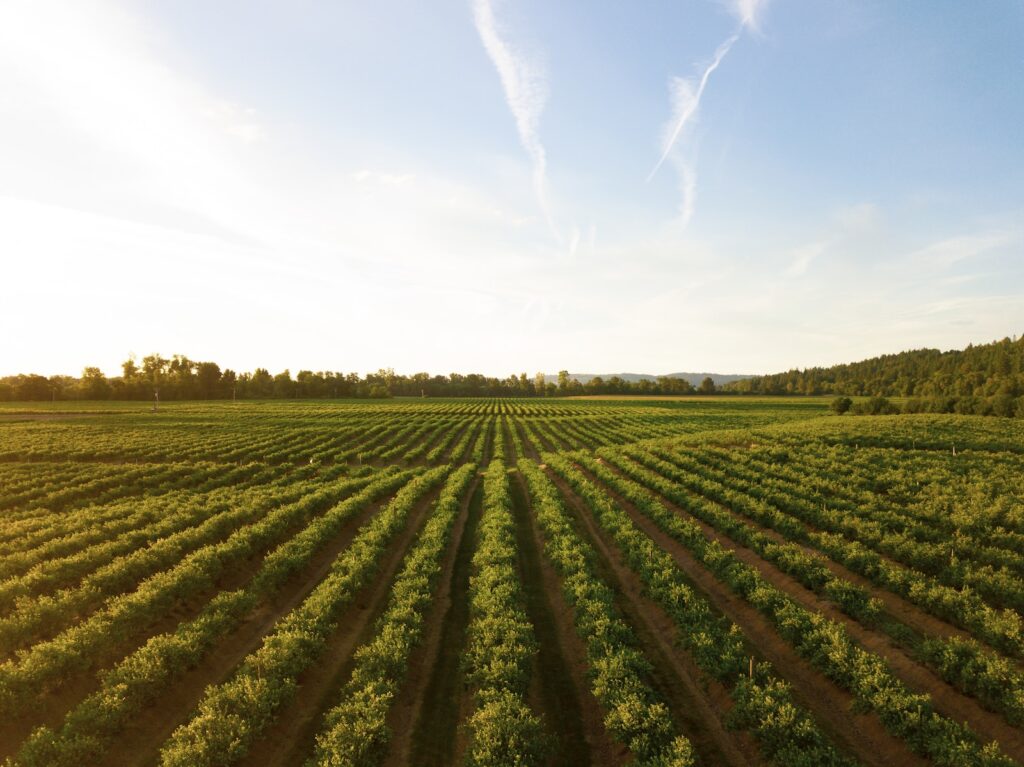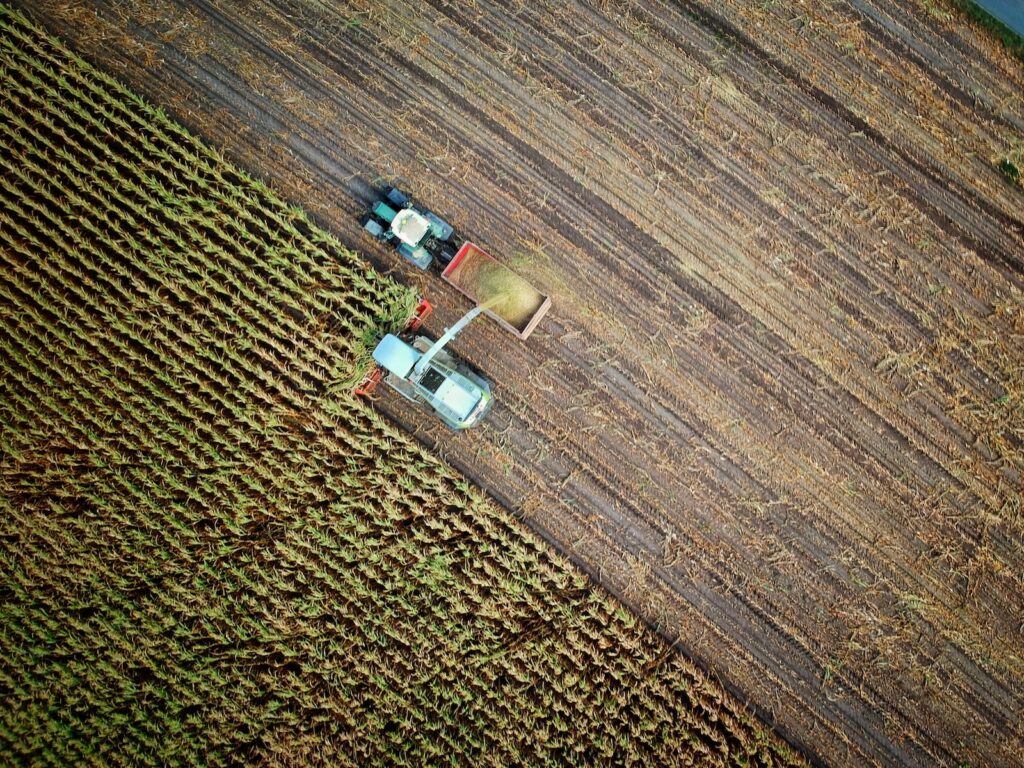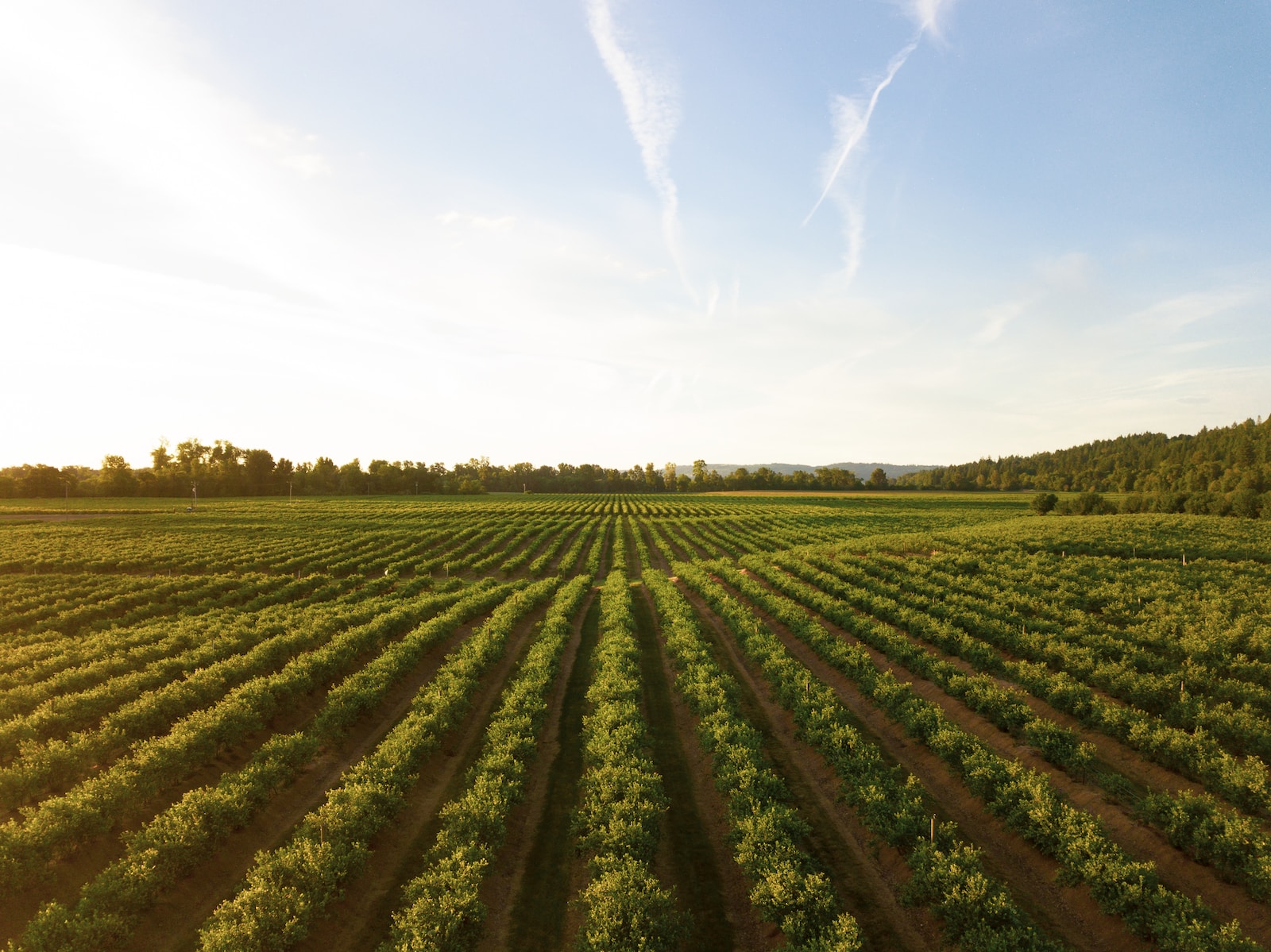When it comes to agriculture, there are countless myths that have taken root in our collective consciousness. From the notion that all farms are corporate-owned to the belief that organic farming is the only sustainable way to farm, these myths often shape our perceptions and decisions related to food and farming. But are these beliefs grounded in reality? In this article, we’ll dive headfirst into a field of agricultural myths, busting them one by one. Buckle up as we navigate through the perplexing and bursty world of agriculture, separating fact from fiction.
Myth 1: Most farms are corporate-owned.
Contrary to popular belief, the majority of farms worldwide are family-owned and operated. According to the Food and Agriculture Organization (FAO), smallholders and family farms play a crucial role in global food production, supplying over 80% of the world’s food. These farms are often passed down through generations, with families deeply rooted in the land, making important decisions about their livelihoods and communities. They represent the heart and soul of agriculture, debunking the myth that most farms are cold, corporate entities.
Family farms are diverse and resilient, adapting to changing conditions and technological advancements. They are not beholden to distant shareholders but are deeply connected to their local communities, often practicing sustainable agriculture methods that prioritize long-term environmental health.
The myth of corporate dominance in farming stems from the visibility of large agribusinesses, but it’s crucial to recognize that they do not represent the majority of farms. Family farms are vital for food security, economic stability, and preserving agricultural traditions.
Myth 2: Food is always expensive.
Food prices can fluctuate based on various factors like weather conditions, supply and demand, and transportation costs. However, it’s essential to recognize that in many parts of the world, people struggle with food insecurity due to poverty and unequal distribution, rather than inherently high food prices.
The cost of food is influenced by a complex web of factors, including production costs, distribution networks, and government policies. While some specialty or organic foods may carry a premium price, staple foods like grains, vegetables, and legumes remain affordable for most people.
Moreover, advancements in agriculture, such as mechanization and genetic improvement, have helped increase food production, making it more accessible. Global markets also play a role in providing a wide range of food options at various price points.
It’s vital to acknowledge the disparities in food access and affordability across the globe. While food might seem expensive to some, others face the harsh reality of food scarcity and hunger. Addressing these issues requires a holistic approach that goes beyond simplistic notions of food prices.
Myth 3: Farming is always traditional and low tech.
Farming has evolved significantly over the years. While traditional methods are still prevalent in some regions, modern agriculture incorporates advanced technology to increase efficiency and reduce environmental impact.
The image of a farmer plowing fields with a horse-drawn plow is a romanticized notion of the past. Today’s farmers often use GPS-guided tractors, drones, and data analytics to optimize planting, irrigation, and harvest operations. These technologies help conserve resources like water and reduce the need for chemical inputs, challenging the myth of farming as a low-tech endeavor.
Precision agriculture, for example, relies on satellite imagery and sensors to tailor farming practices to specific field conditions, ensuring crops receive precisely what they need. These innovations not only improve yields but also contribute to sustainable farming practices.
While traditional farming methods still have their place and value, it’s essential to recognize that modern agriculture embraces technology to meet the challenges of a growing global population and changing environmental conditions.
Myth 4: A pesticide is a pesticide is a pesticide.
Not all pesticides are created equal. There are chemical pesticides, organic pesticides, and biological pesticides. Each type has its unique characteristics and environmental impacts, and their use depends on the specific crop and pest management strategy.
Chemical pesticides are the most widely known, but they can vary in toxicity and persistence in the environment. Properly regulated and applied, chemical pesticides can help control harmful pests and reduce crop losses.
Organic pesticides, derived from natural sources, are considered safer for the environment and human health. However, they may not always be as effective as chemical pesticides, and their use often requires careful timing and monitoring.
Biological pesticides are based on living organisms, such as beneficial insects or microorganisms, that target specific pests. They are highly selective and pose minimal risk to non-target species.
The key is to use pesticides judiciously, following integrated pest management (IPM) principles. IPM emphasizes minimizing chemical use, promoting pest-resistant crop varieties, and incorporating cultural practices to reduce pest populations. By debunking the myth that all pesticides are the same, we can encourage responsible pesticide use and sustainable pest management.
Myth 5: Farmers are uneducated bumpkins.
Farmers are highly skilled professionals who must have expertise in various fields, from agronomy to business management. Many hold college degrees and undergo continuous training to stay updated on the latest agricultural practices.
Modern farming requires a deep understanding of biology, chemistry, and environmental science, as well as a keen business sense. Farmers must make decisions that impact crop yields, resource conservation, and financial sustainability.
Moreover, farming is a dynamic field that embraces innovation and technology. Farmers often adopt new techniques and technologies to enhance productivity and reduce environmental impact. This requires a willingness to learn and adapt, debunking the stereotype of uneducated farmers.
Farmers are at the forefront of feeding the world’s population, and their expertise is essential for addressing global challenges like climate change and food security. It’s time to recognize and respect the knowledge and skills that farmers bring to their profession.
Myth 6: Farmers always drench their crops in chemicals.
Farmers use pesticides and fertilizers judiciously to protect their crops and increase yields. Integrated Pest Management (IPM) strategies emphasize minimizing chemical use and employing alternative pest control methods.
Pesticides are not the first line of defense for farmers. They are used when necessary, and their application is carefully planned to target specific pests while minimizing harm to non-target organisms.
Fertilizer use is also based on soil testing and nutrient management plans. Farmers aim to provide crops with the right amount of nutrients they need, reducing excess runoff that can harm water quality.
Moreover, many farmers embrace sustainable farming practices that reduce chemical inputs. Crop rotation, cover cropping, and no-till farming are examples of techniques that can help control pests and improve soil health without relying on excessive chemicals.
By debunking the myth that farmers always resort to chemicals, we can promote the adoption of sustainable farming practices that benefit both farmers and the environment.

Myth 7: Producing ethanol is always unwise.
Ethanol production, when done sustainably and using the right feedstocks, can be a viable renewable energy source and contribute to reducing greenhouse gas emissions.
Ethanol is typically produced from crops like corn or sugarcane. When these crops are grown sustainably and the entire production process is optimized, ethanol can have a lower carbon footprint than fossil fuels.
Additionally, ethanol can be blended with gasoline to reduce greenhouse gas emissions from vehicles. Many countries have mandated ethanol blending as part of their efforts to combat climate change.
However, it’s essential to acknowledge the potential drawbacks of ethanol production, such as land-use change and competition with food crops. Sustainable practices, like using non-food biomass for ethanol production, can help mitigate these issues.
Debunking the myth that ethanol production is always unwise encourages a nuanced discussion of its benefits and challenges, promoting sustainable approaches to biofuel production.
Myth 8: Organic farming is the only sustainable way to farm.
Organic farming has benefits, but it’s not the only sustainable approach. Conventional agriculture can also be sustainable when proper practices are implemented, such as crop rotation and reduced tillage.
Organic farming is characterized by the use of natural inputs and the avoidance of synthetic pesticides and fertilizers. It often involves practices like cover cropping and organic matter additions to improve soil health.
However, organic farming also has limitations. It may require more land to produce the same amount of food as conventional farming, potentially contributing to deforestation or land-use change. Organic farming may also face challenges in pest and disease management, leading to lower yields in some cases.
Conventional agriculture, when practiced responsibly, can incorporate sustainable practices like precision agriculture and reduced chemical inputs. These approaches aim to minimize environmental impact while maintaining high productivity.
The key is to recognize that sustainability is a complex and multifaceted concept. It depends on factors like local conditions, crop type, and resource availability. Debunking the myth that organic farming is the only path to sustainability encourages a more inclusive discussion of agricultural practices that benefit both the planet and people.
Myth 9: Organic food is always safer, healthier, and more nutritious.
Organic food can be beneficial, but it’s not inherently safer, healthier, or more nutritious than conventionally grown food. Both types of food undergo rigorous safety standards and testing.
Organic food is grown without synthetic pesticides and fertilizers, which may reduce exposure to chemical residues on produce. However, organic farming does use natural pesticides and fertilizers, which can also have potential risks.
The nutritional content of food depends on various factors, including crop variety, soil health, and growing conditions. While some studies suggest that organic produce may have slightly higher levels of certain nutrients, the differences are generally minimal and unlikely to have a significant impact on overall health.
It’s crucial to recognize that the safety and healthfulness of food extend beyond its organic label. Responsible food production practices, whether organic or conventional, play a more significant role in ensuring food safety and nutritional quality.
Debunking the myth that organic food is always superior encourages consumers to make informed choices based on a broader understanding of food production and safety.
Myth 10: Large-scale agriculture feeds the world today.
Large farms are essential, but small-scale and local agriculture also play a significant role in feeding the global population. A diverse agricultural landscape is crucial for food security.
Large-scale agriculture benefits from economies of scale and efficient production methods, allowing for the consistent supply of staple crops like wheat, rice, and corn. These crops form the foundation of many diets worldwide.
However, small-scale and local agriculture contribute to food security by producing a wide variety of foods and preserving traditional crop diversity. They often focus on specialty crops, fruits, vegetables, and livestock that are essential for balanced and nutritious diets.
Moreover, local agriculture reduces the carbon footprint associated with food transportation and fosters community resilience. It allows farmers to respond to the unique needs and preferences of their local customers.
Debunking the myth that large-scale agriculture is the sole driver of global food security recognizes the vital role of diverse farming systems in meeting the world’s nutritional needs.
Myth 11: Large farms are always more efficient.
Farm efficiency varies depending on factors like crop type, location, and management practices. Smaller farms can be highly efficient and sustainable.
Efficiency in farming involves producing more with fewer resources, such as land, water, and inputs. While large farms may excel in certain areas, such as mechanization and economies of scale, smaller farms can demonstrate remarkable efficiency through careful management and innovation.
Small-scale farmers often employ diverse crop rotations, organic farming practices, and precision agriculture techniques to optimize resource use. They may also prioritize sustainable practices that minimize environmental impact.
Efficiency should not be measured solely by farm size but by the effectiveness of resource utilization and the sustainability of production methods. By debunking the myth that large farms are always more efficient, we encourage a broader perspective on farm management and sustainability.
Myth 12: GMOs are always evil.
Genetically modified organisms (GMOs) have their pros and cons. They can enhance crop resistance to pests and diseases, but their long-term effects on ecosystems and human health require ongoing research and regulation.
GMOs are created by introducing specific genes into the DNA of an organism, resulting in desired traits like pest resistance or drought tolerance. These traits can reduce the need for chemical pesticides and improve crop yields.
However, concerns about GMOs include potential unintended consequences, such as the development of resistant pests and unintended environmental impacts. There are also questions about the long-term safety of GMOs for human consumption, although rigorous testing is conducted before GMO crops are approved for the market.
Regulatory agencies worldwide evaluate GMOs for safety and environmental impact, and many countries have adopted strict regulations and labeling requirements. Debunking the myth that GMOs are always evil emphasizes the importance of science-based evaluation and ongoing monitoring of genetically modified crops.
Myth 13: Monsanto is always evil.
Monsanto, now part of Bayer, has faced criticism for its business practices. However, it’s essential to differentiate between the company and the broader debate on GMOs and biotechnology.
Monsanto, as a multinational agribusiness corporation, has been at the center of controversies related to GMOs, patents on seeds, and legal battles with farmers. These issues have fueled a negative perception of the company.
However, it’s important to recognize that the debate around Monsanto goes beyond a single corporation. It encompasses broader questions about agricultural practices, intellectual property rights, and the role of biotechnology in farming.
The agriculture industry is complex, with various stakeholders, including farmers, scientists, policymakers, and consumers. While Monsanto’s actions have been scrutinized, it’s essential to engage in informed discussions about the broader agricultural challenges and opportunities associated with biotechnology.
Debunking the myth that Monsanto is always evil encourages a more nuanced approach to understanding the complex issues surrounding agriculture and biotechnology.
Myth 14: Livestock production is the sole cause of deforestation.
While livestock production can contribute to deforestation in some regions, it’s not the sole driver. Factors like logging and infrastructure development also play a significant role.
Deforestation, the clearing of forests for various purposes, is a complex issue influenced by multiple factors. Livestock grazing can lead to deforestation in areas like the Amazon rainforest, where large swaths of land are cleared for cattle ranching.
However, it’s crucial to recognize that other industries, such as logging and infrastructure development, also contribute to deforestation. These activities can have significant ecological and social impacts, independent of livestock production.
Efforts to address deforestation must consider a holistic approach that addresses all drivers, including agriculture, while also emphasizing sustainable land management and conservation practices.
By debunking the myth that livestock production is the sole cause of deforestation, we encourage a more comprehensive and effective approach to forest conservation.
Myth 15: Livestock always consume a significant portion of human-edible grain.
Livestock can consume a portion of grains, but they also eat crop residues and forage that are not suitable for human consumption.
It’s true that some livestock, particularly monogastric animals like poultry and pigs, are fed grains like corn and soybeans. However, ruminant animals, such as cattle and sheep, primarily graze on pasture and consume forage.
Additionally, livestock can efficiently convert non-human-edible plant materials, such as crop residues and byproducts from food processing, into valuable protein. This reduces competition for human-edible grains and maximizes resource use.
Moreover, the focus on grain-fed livestock is a matter of choice and economics. In some regions, livestock are raised on natural forage without significant grain supplementation.
Debunking the myth that livestock always consume a significant portion of human-edible grain highlights the complexity of livestock diets and the potential for sustainable resource utilization.
Myth 16: Livestock production always significantly contributes to greenhouse gas emissions.
Livestock emissions vary based on factors like diet, management, and waste management. Sustainable practices, such as rotational grazing and methane capture, can mitigate their environmental impact.
While livestock do contribute to greenhouse gas emissions, the extent of their impact depends on various factors. Ruminant animals, such as cattle, produce methane during digestion, which is a potent greenhouse gas. However, their emissions can be reduced through improved feed efficiency and dietary modifications.
Furthermore, emissions from livestock manure can be managed through proper waste management systems. Capturing methane from manure for energy production can reduce emissions and provide a renewable energy source.
Additionally, sustainable livestock farming practices like rotational grazing and agroforestry can sequester carbon in soils and mitigate the overall carbon footprint of livestock production.
Debunking the myth that livestock production always significantly contributes to greenhouse gas emissions encourages the adoption of practices that minimize environmental impact.

Myth 17: Livestock production always wastes water resources.
Efficient water management practices in livestock farming can reduce water wastage. It’s essential to consider water use holistically and focus on water-efficient farming techniques.
Water is a precious resource, and responsible water management is crucial in agriculture. While livestock farming does require water for animal drinking and sanitation, the extent of water use can vary significantly based on farming practices.
Efficient water systems, such as automatic watering systems and water recycling, can reduce water wastage in livestock operations. Properly managed pastures and rotational grazing can also optimize water use.
Moreover, it’s important to consider the water footprint of the entire food supply chain, including the water used in growing feed crops and processing meat. Debunking the myth that livestock production always wastes water resources encourages a comprehensive approach to water conservation in agriculture.
Myth 18: Livestock production always causes water pollution.
Proper waste management and regulatory measures can prevent water pollution from livestock farming. Responsible practices are essential to protect water quality.
Livestock manure, if not properly managed, can contribute to water pollution through nutrient runoff and bacterial contamination. However, responsible livestock farming includes measures to mitigate these risks.
Manure management practices, such as composting and controlled application, can reduce nutrient runoff and water pollution. Regulatory agencies often set guidelines and requirements for livestock operations to protect water quality.
Additionally, technological advancements, like anaerobic digesters, can convert manure into biogas while reducing environmental impacts.
Debunking the myth that livestock production always causes water pollution emphasizes the importance of responsible practices and regulatory oversight in safeguarding water quality.
Myth 19: Livestock production always drives antibiotic resistance.
| Myth | Key Points |
|---|---|
| Livestock production always drives antibiotic resistance. | Responsible antibiotic use in livestock farming, along with regulatory measures, is addressing antibiotic resistance concerns and protecting human health. |
Myth 20: Livestock production always threatens biodiversity.
- Livestock farming can coexist with biodiversity.
- Proper land management and habitat preservation are crucial to minimize negative impacts on wildlife.
- Sustainable grazing practices, such as rotational grazing, can support biodiversity by maintaining healthy pastures.
- Integrating livestock farming with conservation efforts and preserving natural habitats within farming landscapes can contribute to wildlife protection.
Myth 21: Livestock production always contributes to soil degradation.
- Soil degradation is a concern in agriculture, but responsible land management practices can mitigate it.
- Sustainable grazing systems, like rotational grazing, promote soil health by allowing grasslands to recover.
- Integrated farming systems, combining crops and livestock, improve soil fertility through nutrient cycling.
- Practices such as cover cropping and reduced tillage can further enhance soil health in livestock farming systems.
Myth 22: Livestock production always causes desertification.
Desertification is a complex issue influenced by multiple factors, including climate change. While overgrazing can contribute, it’s not the sole driver.
Myth 23: Livestock production always leads to air pollution.
Proper manure management and technology adoption can mitigate air pollution from livestock farms.
Myth 24: Livestock production always contributes to ocean dead zones.
Excessive nutrient runoff from agriculture, including livestock farming, can lead to ocean dead zones. However, practices like precision feeding can reduce this impact.
Myth 25: Livestock production always drives species extinction.
Responsible land management and habitat protection can prevent species extinction caused by livestock farming.
Myth 26: Livestock production always causes habitat loss.
Sustainable livestock farming can minimize habitat loss through practices like rotational grazing and land conservation.
Myth 27: Livestock production always leads to eutrophication.
Proper nutrient management and wastewater treatment can reduce eutrophication risks associated with livestock farming.
Myth 28: Livestock production always significantly contributes to global warming.
While livestock contribute to greenhouse gas emissions, they are not the sole culprits. Sustainable farming practices and methane capture can help mitigate these emissions.
Myth 29: Livestock production always causes water scarcity.
Efficient water use and sustainable practices can help address water scarcity concerns associated with livestock farming.
Myth 30: Livestock production always leads to land degradation.
Sustainable land management practices can prevent land degradation caused by livestock farming.
Myth 31: Livestock production always drives climate change.
Reducing livestock emissions and adopting sustainable practices can contribute to climate change mitigation.
Myth 32: Livestock production always threatens the Amazon rainforest.
While deforestation for livestock grazing is a concern, it’s essential to address the broader issue of illegal logging and land use change in the Amazon.
Myth 33: Livestock production always endangers species.
Proper conservation efforts can safeguard wildlife from the negative impacts of livestock farming.
Myth 34: Livestock production always contributes to the loss of natural habitats.
Sustainable farming practices can protect natural habitats from degradation due to livestock production.
Myth 35: Livestock production always leads to greenhouse gas emissions.
Efforts to reduce emissions, such as methane capture, can mitigate the greenhouse gas impact of livestock farming.
Myth 36: Livestock production always drives deforestation in the Amazon.
While deforestation can occur for livestock expansion, other factors like agriculture and infrastructure development also contribute.
Myth 37: Livestock production always causes soil erosion.
Effective soil conservation measures can prevent soil erosion related to livestock farming.
Myth 38: Livestock production always leads to the loss of topsoil.
Sustainable land management practices can preserve topsoil and prevent erosion.
Myth 39: Livestock production always results in water waste.
Efficient water management practices can reduce water wastage in livestock farming.
Myth 40: Livestock production always threatens the Great Barrier Reef.
While nutrient runoff can impact the Great Barrier Reef, responsible farming practices can minimize this risk.
Myth 41: Livestock production always causes water pollution.
Stringent regulations and proper waste management can prevent water pollution from livestock farming.
Myth 42: Livestock production always contributes to the loss of biodiversity.
Sustainable farming practices can protect biodiversity while meeting the demand for animal products.
Myth 43: Livestock production always drives land use change.
Responsible land management can minimize the negative impact of livestock farming on land use change.
Myth 44: Livestock production always results in overfishing.
Overfishing primarily relates to marine fisheries, not livestock production.
Myth 45: Livestock production always leads to marine pollution.
Sustainable livestock farming does not directly contribute to marine pollution.
Myth 46: Livestock production always contributes to the loss of wetlands.
Wetland conservation efforts can protect these ecosystems from the impacts of livestock farming.
Myth 47: Livestock production always leads to ocean acidification.
Ocean acidification primarily results from increased carbon dioxide levels in the atmosphere, not livestock farming.
Myth 48: Livestock production always threatens coral reefs.
Coral reef health is more influenced by factors like climate change and pollution than livestock farming.
Myth 49: Livestock production always drives water scarcity.
Efficient water use practices can mitigate water scarcity concerns related to livestock farming.
Myth 50: Livestock production always causes water pollution.
Responsible waste management and regulatory measures can prevent water pollution from livestock farming.
Conclusion
Agriculture is a complex and multifaceted field, and it’s essential to debunk these myths that often oversimplify the challenges and benefits of farming. While there are valid concerns related to agriculture, it’s crucial to approach them with nuance and a deeper understanding of the diverse practices and contexts within the industry. By dispelling these myths, we can engage in more informed discussions and make well-informed choices about our food and farming practices.

